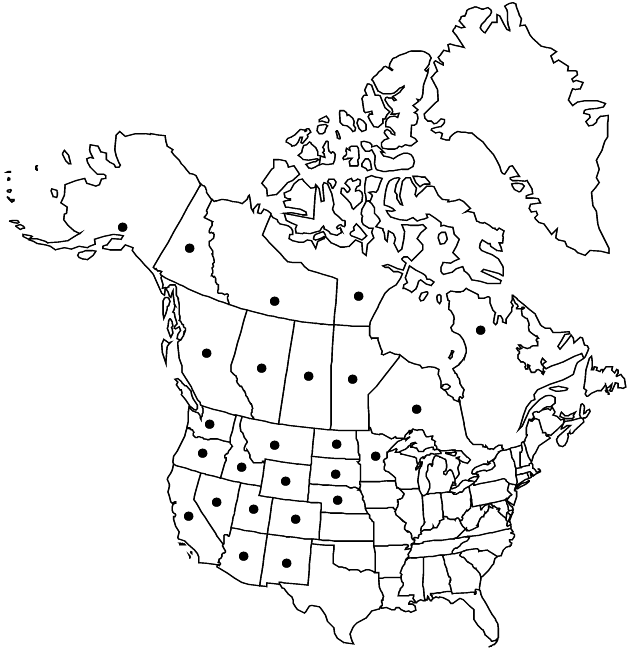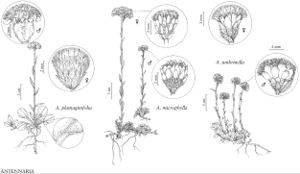Antennaria microphylla
Bull. Torrey Bot. Club 24: 303. 1897.
Dioecious. Plants 9–30 cm (stems stipitate-glandular distally). Stolons 1–5 cm. Basal leaves 1-nerved, spatulate, 6–16 × 2–6 mm, tips mucronate, faces silvery gray-pubescent. Cauline leaves linear, 5–25 mm, not flagged (apices acute). Heads 6–13 in corymbiform arrays. Involucres: staminate 5–6.5 mm; pistillate 5.5–7 mm. Phyllaries distally bright white to light yellow. Corollas: staminate 2.5–3 mm; pistillate 3–4.3 mm. Cypselae 0.7–1.2 mm, glabrous or sparingly papillate; pappi: staminate 3–4 mm; pistillate 3–5 mm. 2n = 28.
Phenology: Flowering early–mid summer.
Habitat: Moist open areas, flood plains of streams, margins of alkaline depressions, lower montane to subalpine (subarctic)
Elevation: 0–3200 m
Distribution

Alta., B.C., Man., N.W.T., Nunavut, Ont., Que., Sask., Yukon, Alaska, Ariz., Calif., Colo., Idaho, Minn., Mont., Nebr., Nev., N.Mex., N.Dak., Oreg., S.Dak., Utah, Wash., Wyo.
Discussion
Antennaria microphylla is a primary sexual progenitor of the A. rosea polyploid agamic complex (R. J. Bayer 1990b). A. Cronquist (1955) included A. rosea within his circumscription of A. microphylla. It is preferable to recognize sexual diploids as distinct from their morphologically discrete hybrid apomictic derivatives. Antennaria microphylla is always dioecious and has stems distally stipitate-glandular and white phyllaries; A. rosea is always gynoecious and has stems without glandular hairs and phyllaries only occasionally white.
Some authors (A. E. Porsild 1950; E. H. Moss 1959; Porsild and W. J. Cody 1980) have recognized A. nitida as distinct; comparisons of the nomenclatural types of the two show that they are conspecific. Antennaria microphylla has allelopathic properties (G. D. Manners and D. S. Galitz 1985).
Selected References
None.
